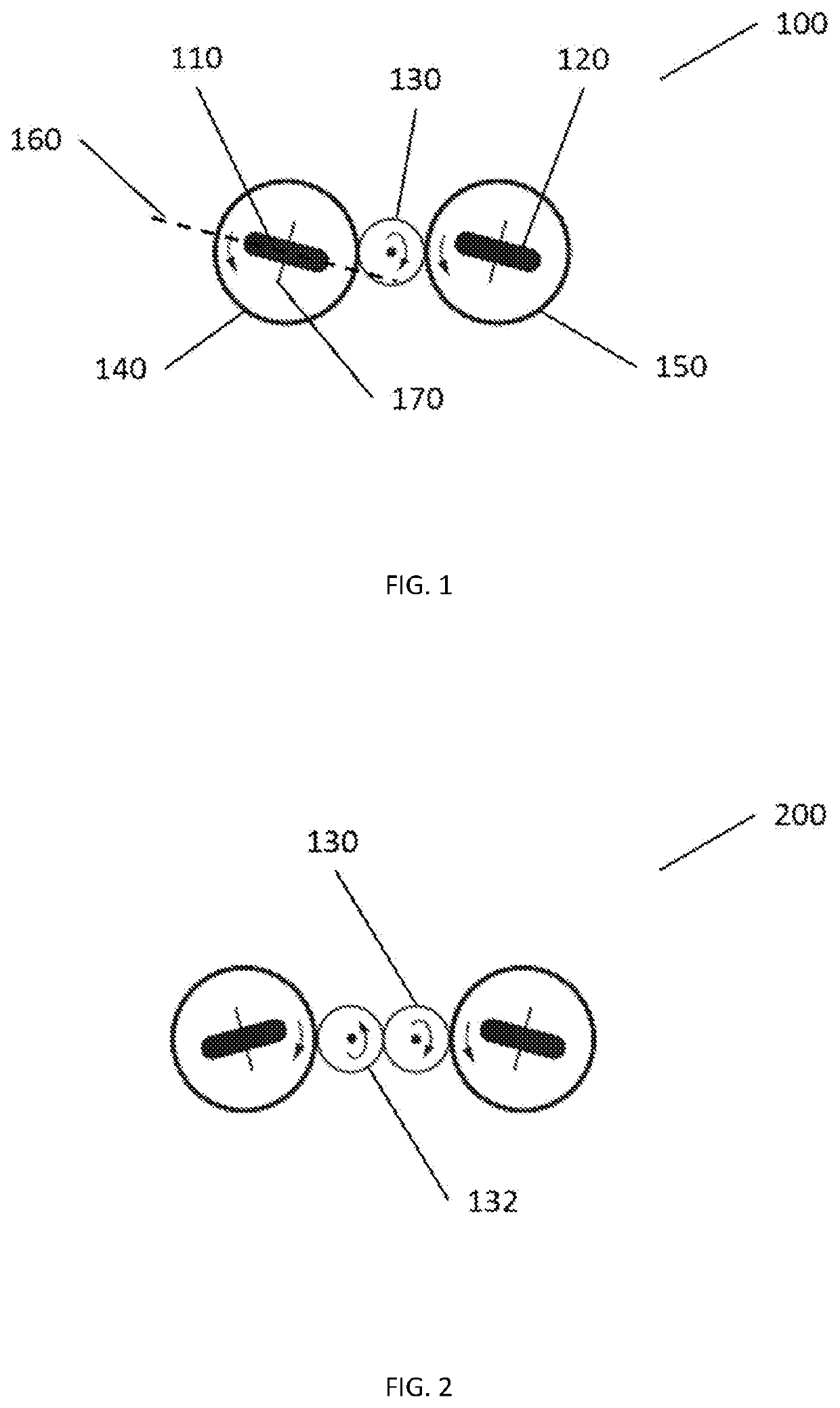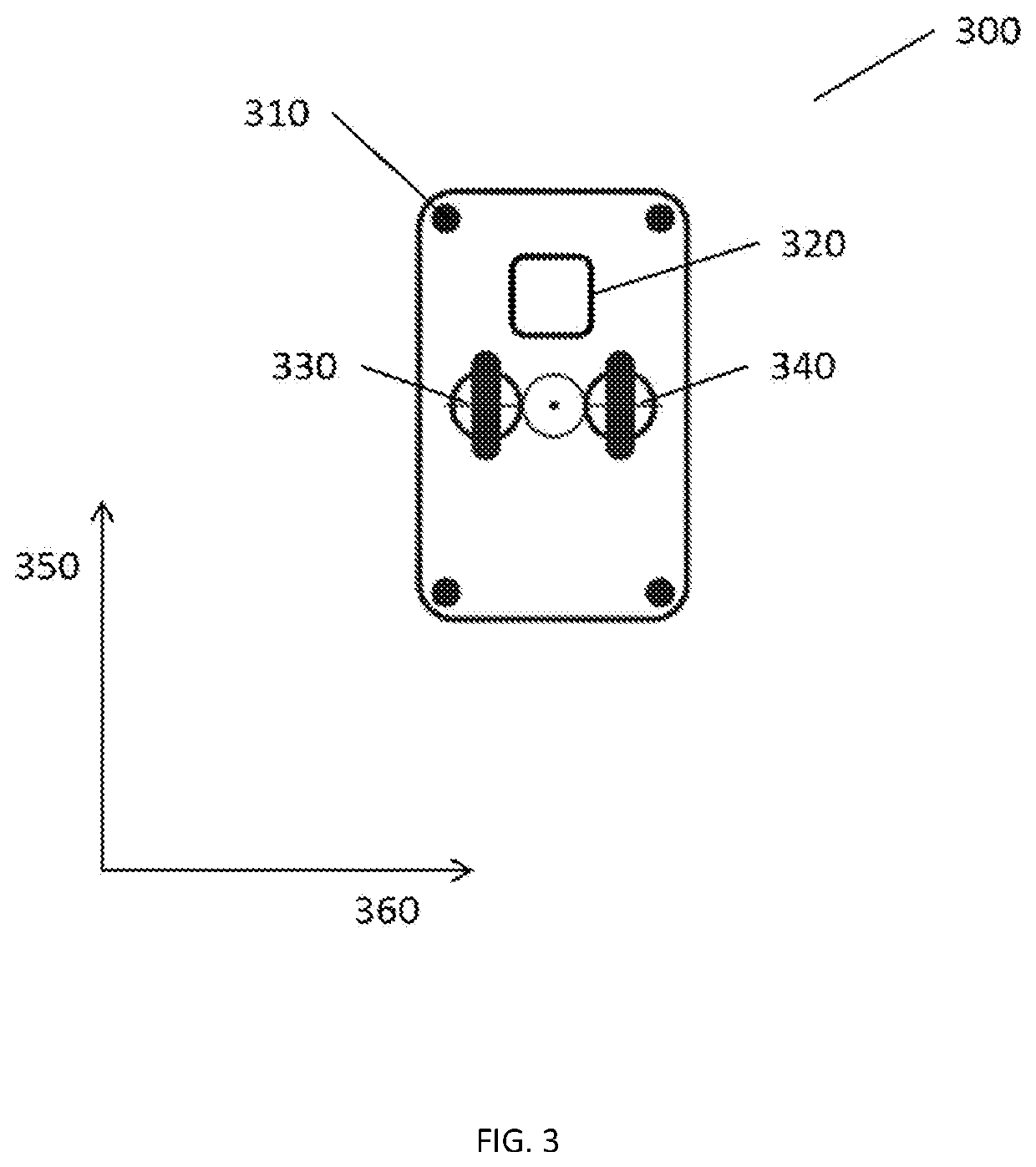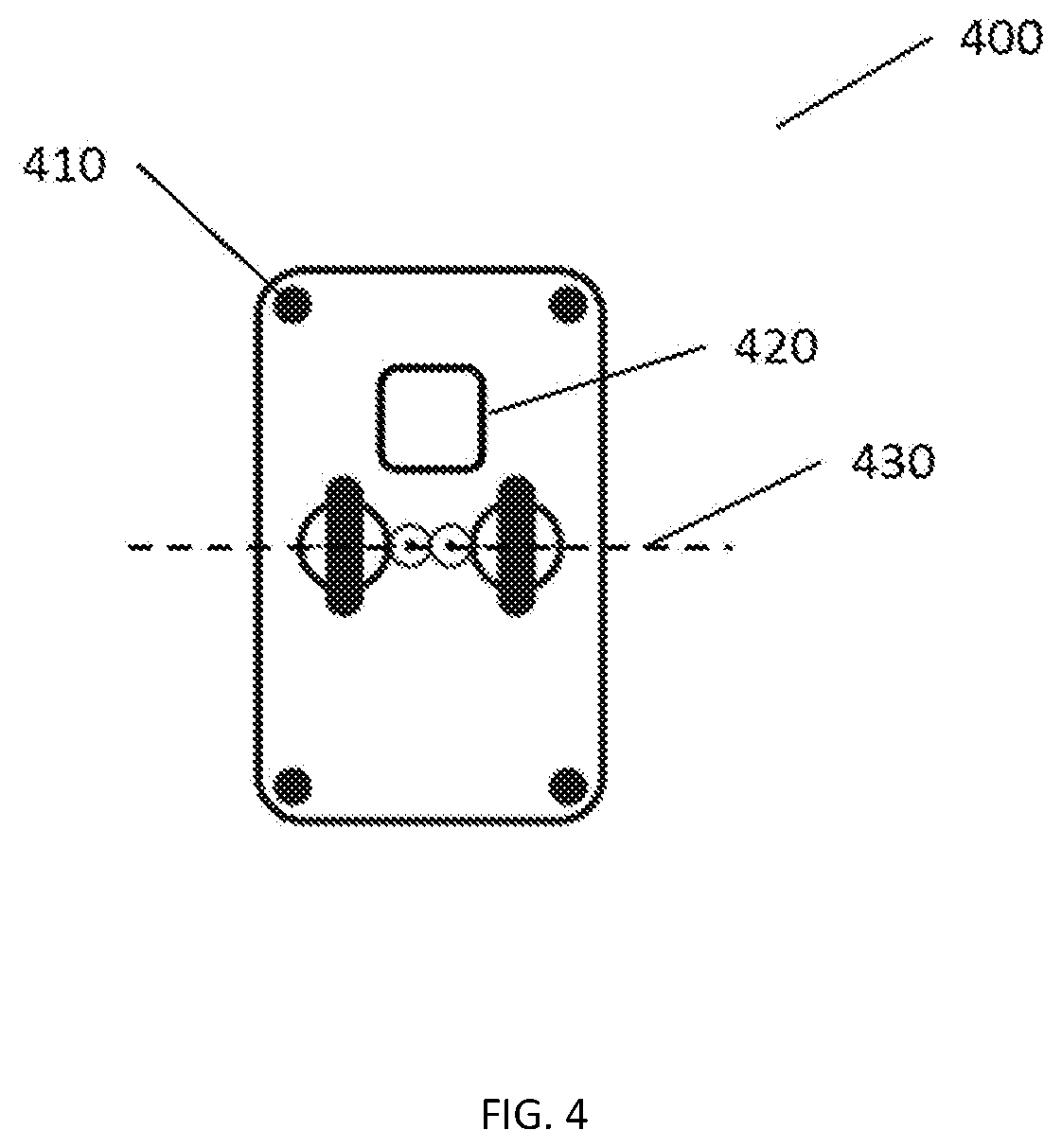Selectively reconfigurable drive-assembly
a drive assembly and reconfigurable technology, applied in the direction of steering parts, steering linkages, deflectable wheel steering, etc., can solve the problems of complex drive arrangement, difficult control, and inability to enable the autonomous robot to drive sideways
- Summary
- Abstract
- Description
- Claims
- Application Information
AI Technical Summary
Benefits of technology
Problems solved by technology
Method used
Image
Examples
Embodiment Construction
[0024]FIG. 1 shows a drive assembly 100 in a first operation mode, the drive assembly 100 comprising a first wheel 110, a second wheel 120 and a steering actuator 130. The first and second wheels 110 and 120 are arranged on rotatable platforms 140 and 150 respectively. The rotatable platforms 140 and 150 are rotatable around respective steering axes, e.g. first and second pivot axes that may coincide with the central axes of the rotatable platforms 140 and 150. The steering actuator 130 is coupled to the first and second rotatable platforms 140 and 150 or to the first and second pivot axes. The steering actuator 130 may be mechanically, hydraulically, electrically or magnetically coupled to the rotatable platforms 140 and 150 or to the first and second pivot axes. The mechanical coupling may be realised using gears or pull cables.
[0025]A rotation of the rotatable platforms 140 and 150 results in a rotation of the wheels 110 and 120 around the first and second pivot axis respectively...
PUM
 Login to View More
Login to View More Abstract
Description
Claims
Application Information
 Login to View More
Login to View More - R&D
- Intellectual Property
- Life Sciences
- Materials
- Tech Scout
- Unparalleled Data Quality
- Higher Quality Content
- 60% Fewer Hallucinations
Browse by: Latest US Patents, China's latest patents, Technical Efficacy Thesaurus, Application Domain, Technology Topic, Popular Technical Reports.
© 2025 PatSnap. All rights reserved.Legal|Privacy policy|Modern Slavery Act Transparency Statement|Sitemap|About US| Contact US: help@patsnap.com



